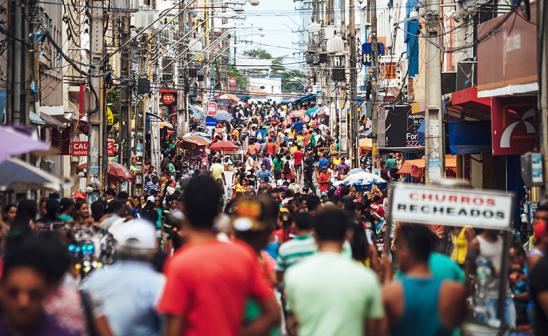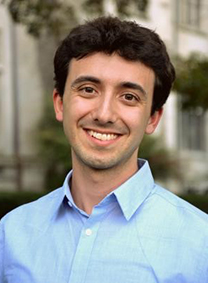New Research Finds Nearly 80 Million Latin Americans Live Under Criminal Governance

Findings suggest a correlation between gang governance and a positive perception of state governance.
By Sarah Steimer
In nationally representative surveys across 18 Latin American countries, 13 percent of respondents say that local criminal groups provide order and reduce crime in their neighborhoods. This corresponds to 79.1 million residents, and researchers believe this likely underestimates the true number. In this first systematic assessment of criminal governance across a region, published by SSRN and led by faculty and doctoral students in the Department of Political Science at the University of Chicago, the research team also found that, when compared to the presence of non-governing gangs, criminal governance is correlated with greater state presence, more positive perceptions of state governance, and higher reported income.
The study relies on novel data from the 2020 Latinobar ́ometro survey and a massive compendium of qualitative sources to make country-level estimates of people living under criminal governance, and explores the correlates of criminal governance. The analysis reveals variation across countries, as well as counterintuitive findings suggesting that gangs govern more where the state is more present. The data does not, however, permit strong causal inferences about why these patterns emerge. As a result, the team chose to present their work in a short-letter format, designed to inform other researchers and stimulate future research.
The researchers had been exploring the phenomenon for years, manually collecting qualitative research from across Latin America to identify where criminal governance occurred, then using census data to construct population estimates. Yet the researchers feared they might be missing many cases of criminal governance not captured by academic studies and journalism. The appearance of new questions on the 2020 Latinobar ́ometro survey — applied to nationally representative samples of 1,000-1,200 respondents in each country, geocoded at the district level — gave them a better basis for studying the extent and correlates of criminal governance. The final estimate from the new data was more than three times larger than their original estimate based purely on qualitative sources.
The 2020 survey included new questions about gang presence and activities that the researchers used to produce their estimates. Respondents were asked, “Are there organized crime, armed groups, narco groups, or gangs where you live?” The team coded all affirmative answers as “criminal presence.” Respondents who answered yes were then asked about the roles those criminal groups play, and could choose multiple items from a list of four: “Control robberies, improve security,” “Put order in the zone,” “Extort,” and/or “Use violence.” Researchers coded either of the first two options as criminal governance. Although many respondents indicated both violence and extortion, the overlap between governance activities and either extortion or violence was very small.
The team then used their previous research to triangulate and validate the survey results. They used a statistical process to create district-level estimates that were compared to true district-level data on state government presence that, for example, showed that gang governance is most present where the state has more presence, not less. They also found a positive connection between people's reported income and gang governance.
The study, by its own admission, raises more questions than it answers. Further research is needed to validate and understand the correlations found. But the study makes clear the enormous number of people in Latin America who rely on criminal governance for day-to-day security. Study co-author Benjamin Lessing, associate professor of Political Science, emphasizes that the number is likely to be significantly higher, because some residents living under gang rule may be afraid to report it, and because survey teams may undersample the most gang-ruled territories. “Violence draws attention, so we know more about it,” Lessing says. “Governance deflects attention — that’s part of why gangs do it. Gangs probably govern most in places where we don't see a lot of gang violence.”
The researchers also draw on their results to make suggestions for future refinements of the survey questions. For example, asking if gangs extort may not be the best way to ask if the gangs charge taxes — because people don't necessarily feel that it's extortion when a gang that is providing governance services asks for a payment.
“What we find really provocative is that, for a huge number of people in the region, state government is only one of two political authorities that they're relating to,” says study co-author Andres Uribe, a PhD candidate in Political Science. “We have few generalizable findings about the other one (criminal governance) as a political authority. Yet for 80 million people, this is their political life. It’s an important field of inquiry for social science to explore.”
 THE UNIVERSITY OF CHICAGO
THE UNIVERSITY OF CHICAGO



